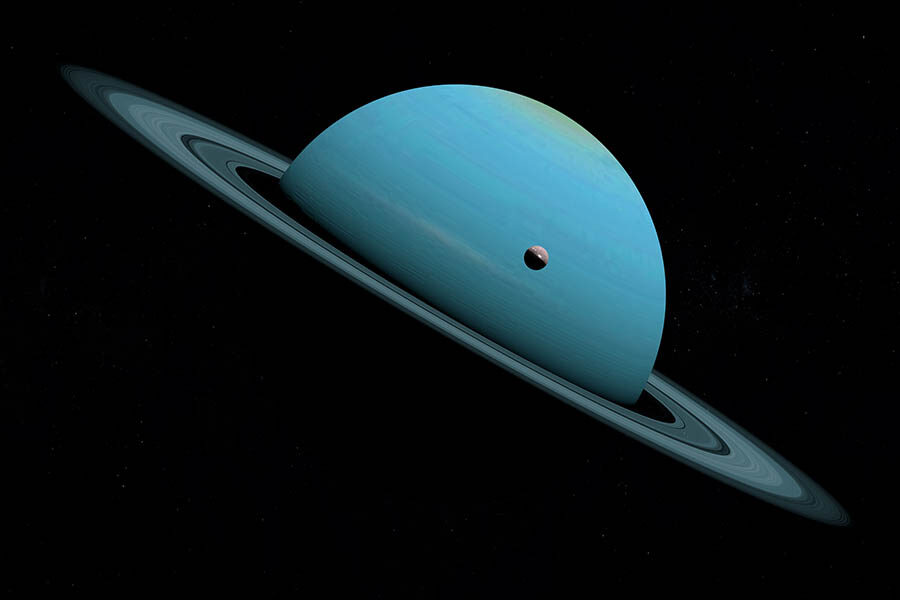10 Ariel Moon Facts | Interesting Facts about Ariel
When looking at the moons of Uranus, you can’t look past Ariel. It is one of the largest moons orbiting the planet, and like the other moons, it suffers from Uranus’s positioning and long time it takes to orbit the Sun. This results in long seasons for each side of the moon. Lets look at some facts about Ariel.
- Ariel has an estimated radius of 359.8 miles (578.9 km). It is the fourth largest moon orbiting Uranus.
- This makes Ariel around a third of the size of the Earth’s moon. It’s a very similar size to another Uranian moon, Umbriel.
- Ariel orbits Uranus at an estimated distance of 118,000 miles (190,000km).
- It takes Ariel around 40 hours to complete one full orbit around the planet.
- Ariel takes it’s name from both Shakespeare’s The Tempest and Alexander Pope’s The Rape of the Lock.
- This moon was discovered by William Herschel, the same man who discovered Uranus, although he didn’t discover this moon until years later.
- Ariel’s surface is covered in various different craters and canyons.
- The largest crater on Ariel is actually only 78km in diameter, which is quite small for a moon this size. It’s name is Yangoor.
- The temperature on Ariel is an average of -213°c, making it one of the colder moons orbiting Uranus.
- Ariel is large enough that it is considered one of the spherical moons, meaning it is almost a perfect sphere.

Ariel os both a character in Shakespeare’s The Tempest, and Alexander Pope’s The Rape of the Lock. All five major moons of Uranus get their name from one of these two men. In both of these works, Ariel is essentially a spirit (in Pope’s work it is described as a Sylph). In The Tempest, Ariel is the spirit that helps the main character of the play, Prospero.
Out of the five major moons of Uranus, it orbits the planet the second closest, with quite a fast orbiting time of just a few days. One side of this moon always faces Uranus at it orbits it, which we call a tidal lock. The North and South poles of Ariel are victim to this, as it takes Uranus 82 years to orbit the Sun. This means that each pole will see the Sun for 42 years, then get 42 years of darkness.
Being the fourth largest moon of Uranus, this moon has a moderately high density. This means that it is likely made up of some water ice, but there are a lot of other materials making up this planet too, like rock and carbon. We don’t know what the mantle and core of Ariel are made up of, but astronomers suggest it likely has an ice mantle and a rocky core.
Like many of the other moons that orbit Uranus, the surface of this moon is coated with water ice. As well as this, there is some carbon dioxide on the surface too – this may suggest that this moon has it’s own very thin atmosphere made up of the gas. Ariel is the most reflective moon of Uranus, and although it has a neutral color, this makes it a lot easier to see with a telescope. The surface is also heavily cratered, with any canyons and ridges across it’s surface.
As Ariel is one of the larger moons that orbits Uranus, it is possible to see it with a telescope. However, it is quite difficult and you might not be able to see it clearly with a cheaper amateur telescope, so you might need something more powerful.
To sum it up, the fourth largest moon orbiting Uranus gets around the planet in just 2 and a half days, which means that it travels at a fast speed. But even to date, we don’t have much informations about this moon as we have only visited it once in 1986 with the Voyager 2. So hopefully in the coming years, we can learn a little more.